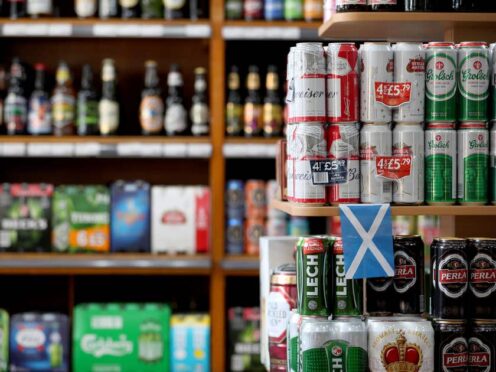An increase in the minimum price for alcohol has been approved by MSPs despite concerns from the Conservatives that the policy has not been a “slam dunk success”.
MSPs backed by 88 votes to 28 Scottish Government plans to hike the minimum unit price (MUP) charged for drink from the current level of 50p a unit to 65p a unit.
Drugs and alcohol policy minister Christina McKelvie said the 30% hike would help save more lives.
She told Holyrood that voting in favour of the rise would “show that Scotland continues to be world leading, with policies to improve the health of people”.
Campaigners at Alcohol Focus Scotland welcomed the vote, with CEO Alison Douglas saying: “Well done Holyrood. You have chosen to stand up for people’s right to health despite the best efforts of Big Alcohol once again to derail this policy.”
We are delighted @ScotParl has voted to continue this life-saving policy and set the #MUP at an appropriate level from 30 September 2024 #65pMUP will:
⚖️ address the impact of inflation and⚠️ help tackle the #AlcoholDeathsEmergency
Read more 🔽https://t.co/xt9oNy2CDN pic.twitter.com/hlnvoK1Oi0
— Alcohol Focus Scotland (@AlcoholFocus) April 17, 2024
She added: “Uprating of the minimum unit price to 65p per unit will save hundreds of lives and reduce demand on our NHS.
“This will improve the lives not just of people who drink but those around them, whose health and wellbeing can be affected.
“Crucially it will reduce the likelihood that future generations will develop alcohol problems.”
Her comments came after Scottish Conservative health spokesman Dr Sandesh Gulhane spoke out against the increase, which is due to come into force at the end of September.
The Tory argued that increasing the MUP “disproportionately penalises responsible drinkers on a low income and those dependent on alcohol”.
Dr Gulhane insisted: “MUP isn’t a slam dunk success or magic bullet as the SNP believe.
“Because alcohol-related deaths are not reducing by any credible measure.”
While he said addiction was a “complex” problem that “requires a multi-faceted approach”, he claimed the sole approach of the Scottish Government was to “put up the price” charged for alcohol.
The Tory insisted: “They have their silver bullet, and that silver bullet is a blank.
“Because what is clear is that more people suffer alcohol-related deaths now than in 2018, when MUP was introduced.”

But Ms McKelvie insisted that research showed the policy had reduced deaths by 13.4%, which means 156 lives a year have been saved.
With Scotland continuing to “experience significant levels of alcohol harm”, she added that increasing the level of the MUP to 65p would “save additional lives”.
The minister said that while deaths specifically caused by alcohol had increased – with official figures showing a rise to 1,276 in 2022 – there “would have been an even greater number” of such deaths if the policy had not been in place.
Ms McKelvie stated: “As we have made clear, the policy aims to reduce alcohol-related harm by reducing consumption at population level, with a particular focus on targeting people who drink at hazardous and harmful levels.
“We believe the proposals strike a reasonable balance between public health benefits and any effects on the alcoholic drinks market and impact on consumers.
“Evidence suggests there has not been a significant impact on business and industry as a whole but we will continue to monitor this.”
